67 Types of Apricots (With Pictures)
-

- Last updated:

Apricots are believed to have been eaten 5,000 years ago in India and were written about by emperor Yu of ancient China in 2,200 B.C.
Today, apricots are popular for their sweet, fruity flavor, and are known to be high in vitamin A, beta-carotene, and vitamin E. They are especially good for preventing and combating certain eye complaints and can be eaten fresh or dried. They are a pitted fruit, although some commercial varieties have been bred as “freestone” varieties, which means that the stone is known to separate easily from the flesh of the fruit.
Apricots are native to parts of Asia and were introduced to the U.S. by Spanish missionaries. Now, they are grown all over the world, and there are hundreds of varieties available. Below, you will find common apricot varieties to give you some idea of the variety of this type of fruit.

The 67 Types of Apricots
1. Apache
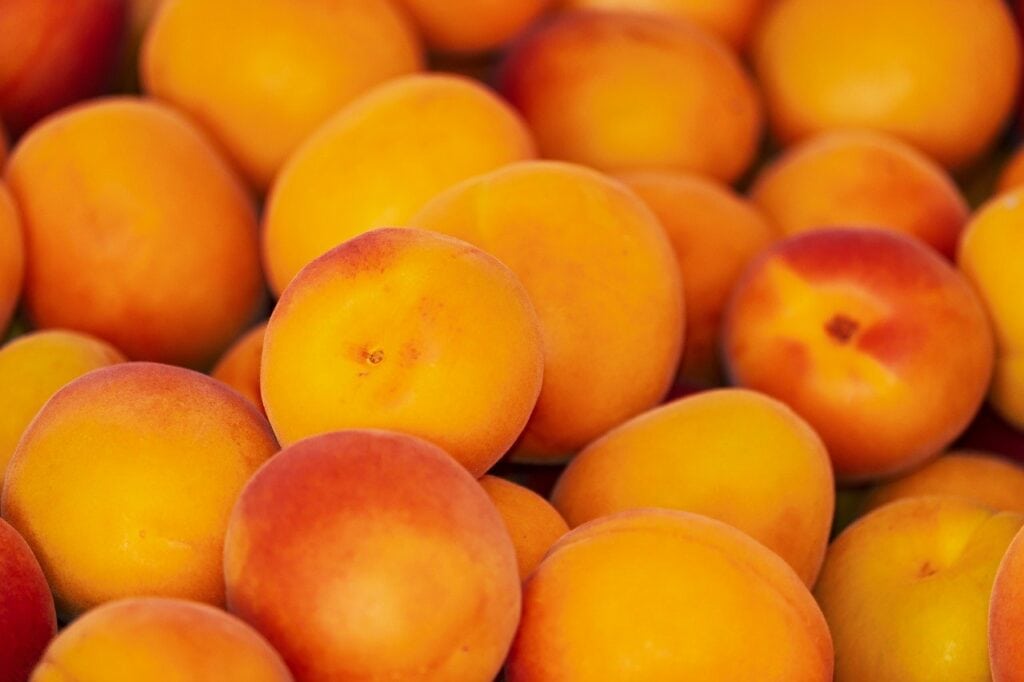
The Apache is a relatively new variety of apricot, having only been released to commercial growers in 2003. It is an average-sized apricot, has a strong aroma, and is a freestone variety, which makes it easier to enjoy.
2. Aprium
This late-harvest apricot has some plum flavors because this is a hybrid of the two fruits. This cross also means that the Aprium has firmer flesh than most apricots. It is recognizable for its bright yellow skin. It is considered a large fruit, although some only grow to an average size.
3. Arctic
The Arctic Apricot gets its name from the fact that it has been bred to be able to cope with the cold weather. Its flavor combines an acidic tartness with fruity sweetness, and this is a popular choice with growers that suffer frosts or live in cold climates.
4. August Glo
The medium-sized August Glo is a yellow-colored apricot and is another fruit that is both tart and sweet. It is a late harvester, hence the “August Glo” name, and it is considered similar to the popular and more common Blenheim apricot.
5. Autumn Glo
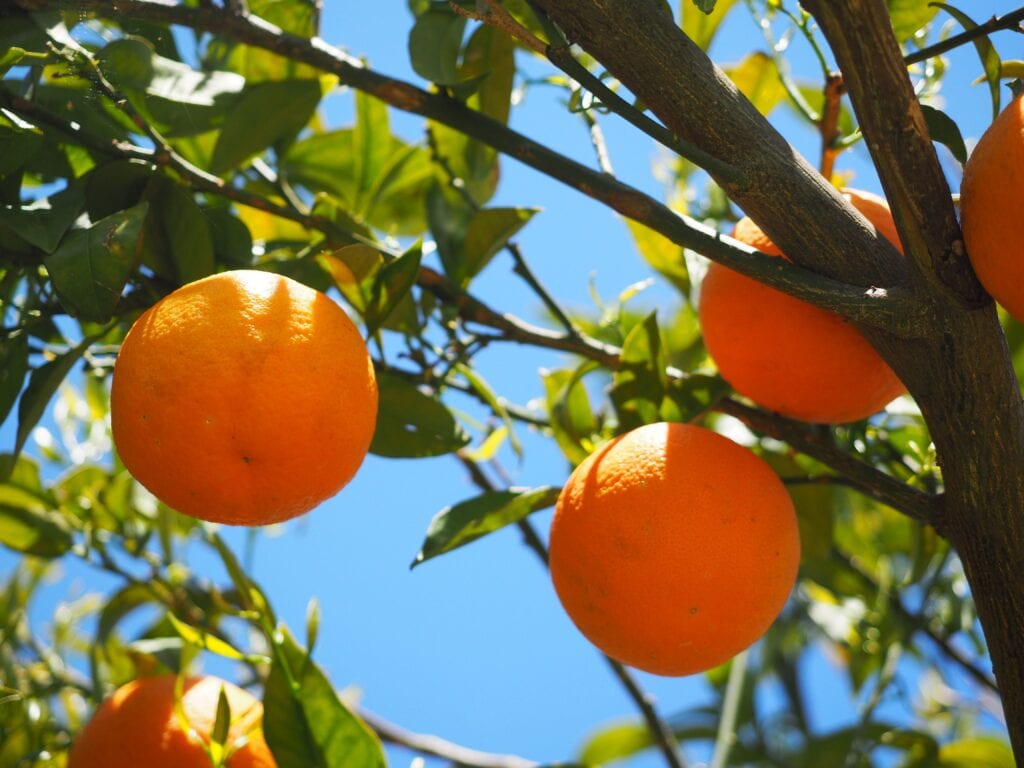
The Autumn Glo is harvested in Autumn, between August and September. It has a small amount of hair on its yellow skin, and it is popular with home growers because the tree grows to a height of around 12 feet rather than the 18 feet trees of other apricots.
6. Autumn Royal
The Autumn Royal may fruit a little earlier than the Autumn Glo, with harvest usually occurring between July and September. It is similar to the Blenheim variety and is a yellow apricot that is medium to large in size and has a variety of uses.
7. Bebeco
Originating from Greece, the Bebeco is harvested during the first weeks of summer, which makes it an early bloomer. Although primarily yellow, the fruit has a reddish tinge, and it is considered a tasty apricot that is commonly used in desserts.
8. Blenheim
The Blenheim apricot is one of the most common and popular varieties of apricots in the world and is the one that other varieties are compared to. It is full of flavor, has a yellow-orange color, and has a freestone pit. The Blenheim is an early bloomer, which makes it accessible, but also means that it can be prone to late winter frosts.
9. Bonny Royal
The Bonny Royal is a relatively new variety of apricot, having been introduced in 1998. It is a large fruit with a red tinge and has some floral undertones below its sweet flavor. It is a hardy fruit once picked, which means it travels well and makes it popular for export and import.
10. Brittany Gold
With its yellow skin and flesh, the Brittany Gold is a medium apricot that is harvested in July or August. It is a freestone apricot, so the stone easily comes away from the fruit, making it popular for eating fresh or for cooking.
11. Bulida
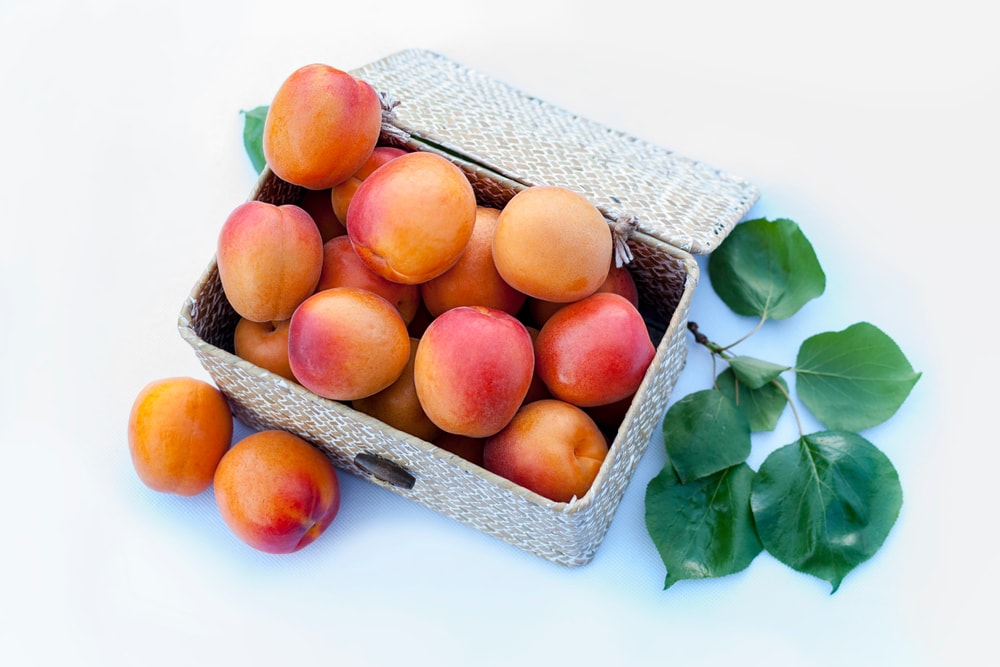
The Bulida is the most popularly grown apricot in South Africa, although the fruit originates from Spain. It is considered a milder tasting apricot, but the flavor is fruity and sweet. It is a large fruit and is frequently used in canning and preserving.
12. Canadian White Blenheim
The Canadian White Blenheim is a variant of the Blenheim apricot. It has a creamier colored skin than the original and is considered a late harvest apricot and it gives a large, freestone apricot.
13. Castlebrite
The Castlebrite is an early bloomer with harvesting time usually around May, which is much sooner than most other varieties and makes it popular for extending the apricot harvesting season. If picked early, the fruit has a tart flavor, but this dissipates if left until fully ripened.
14. Chinese
Many apricot trees require a number of hours at lower temperatures (between 32°F–45°F) before they will blossom and the Chinese variety requires 700 hours at these temperatures, so it enjoys a frost. The grower that can provide these conditions will enjoy an early harvest of a yellow-orange and mild fruit.
15. Divinity
The Australian Divinity apricot is unusual because its season time changes as the apricot tree ages. It starts out with an early harvest but progresses to a late harvesting tree as it gets older. Rather than being a freestone, this is considered a clingstone, which means that it is more difficult to separate the pit from the flesh.
16. Earli Autumn
The Earli Autumn apricot flowers in early autumn and prefers cooler climates but may not tolerate frosts, which means it needs a very specific climate to produce good fruit. The tree itself is comparatively small, however, which means it can be a good choice for growers with limited space.
17. Earlicot
The Earlicot apricot tree was developed around 1990 and has early maturing fruits that are considered especially good for eating fresh. They have firm flesh, and the trees produce a good harvest.
18. Earligold
The Early Golden apricot is a yellow apricot with large fruit. This freestone variety offers a mid-season harvest and there is a small amount of peach-like fuzz covering the fruit. The tree is considered beneficial for ornamental planting.
19. Earlyblush
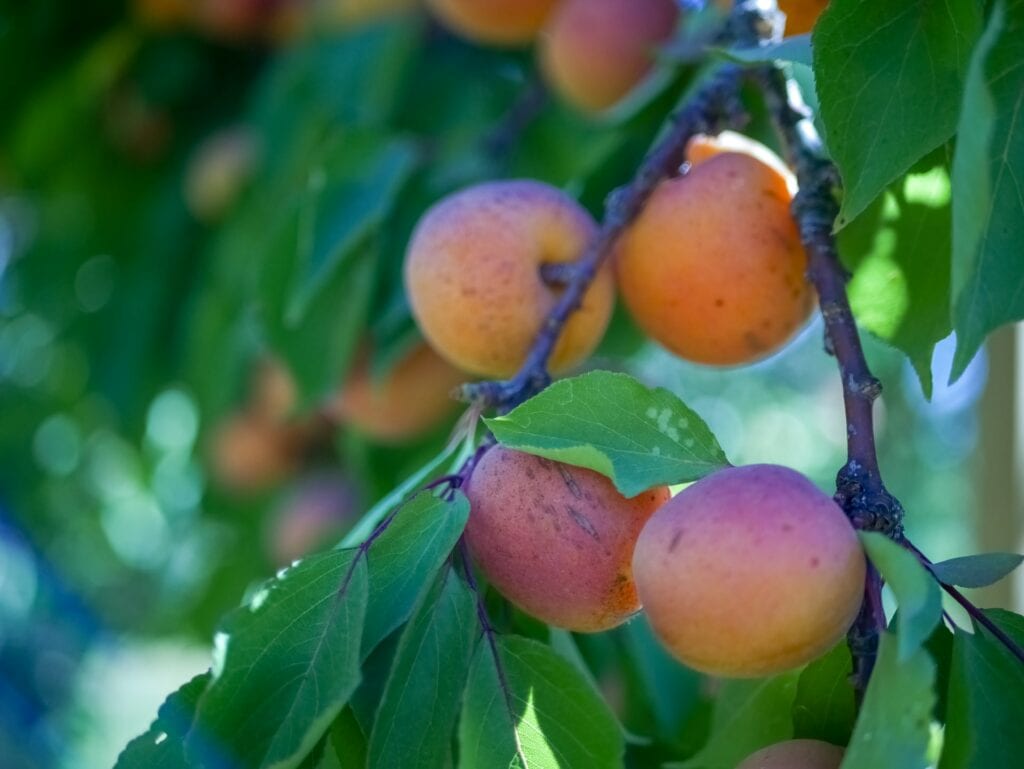
The early-harvesting Earlyblush variety is an orange apricot but has a notable red blush to its color. The variety was introduced in 1995, which makes it a relatively new addition to the increasing range of apricot trees.
20. Flavor Giant
The Flavor Giant is aptly named for its large fruit and for the fact that the fruit retains its sweet flavor even as it does get bigger. It is an early-season apricot and has a freestone pit. It is popular because trees will grant a lot of fruit if given the right conditions and are considered to have a mild but fruity taste.
21. Floragold
Considered a great choice for the home grower, the Floragold yields a fruit that is equally good for baking as it is for eating fresh. It has a freestone pit, so is easy to manage, and the early-season trees do not require as many chilling hours as some varieties (400 hours).
22. Garden Annie
The Garden Annie is a dwarf apricot variety. Its trees only grow to a height of approximately 8 feet, but the tree gives pale pink flowers and bright yellow apricots. The fruit remains firm even as it ripens, and it only requires 300 chilling hours. It is a good variety for garden growers.
23. Gold Kist
The Gold Kist is another variety that only requires 300 chilling hours, and it does not do well with frost or cold weather. Fruit is ready to harvest during the early season and it produces a yellow-orange fruit.
24. Goldbar
The Goldbar is a large apricot that is considered a freestone variety, although the pit is also large. The fruit is considered mild in flavor and is said to be best enjoyed fresh, ideally straight off the tree.
25. Goldcot
The Goldcot is a mid-season variety that has a freestone fruit and that benefits from having 800 chilling hours, which means that it can be grown in some cooler climates and may actually struggle in areas like California that are best known for their apricot production.
26. Golden Amber
The Golden Amber is another good choice for home growers because it blooms over a period of 30 days, so if you don’t have time or call to use all of your harvest in one go, you can harvest over a period of a month and use the fruit over this time.
27. Golden Sweet
The Golden Sweet is a freestone apricot with fruit that is known for its sweet flavor. It is a late bloomer, and it is known to be a hardy apricot whose tree can grow in more challenging conditions. It only has small fruit, but its light orange color is appealing.
28. Goldrich
The Goldrich apricot is not too popular with garden growers, primarily because its tree can grow to heights of 25 feet or more and it requires a lot of sun, although it can withstand some frost. It is also susceptible to various diseases and suffers other growing problems.
29. Goldstrike
Because it requires around 1,000 chilling hours, the Goldstrike is considered suitable for cooler growing environments. It remains acidic until it is harvested, which means that it is also good for shipping and moving.
30. Harcot
The Canadian Harcot is a mid-season apricot that can grow well in colder climates and gives a large fruit. The apricot has a sweet flavor and a patch of red on its otherwise yellow skin. This is considered a disease-resistant strain of apricot.
31. Harglow
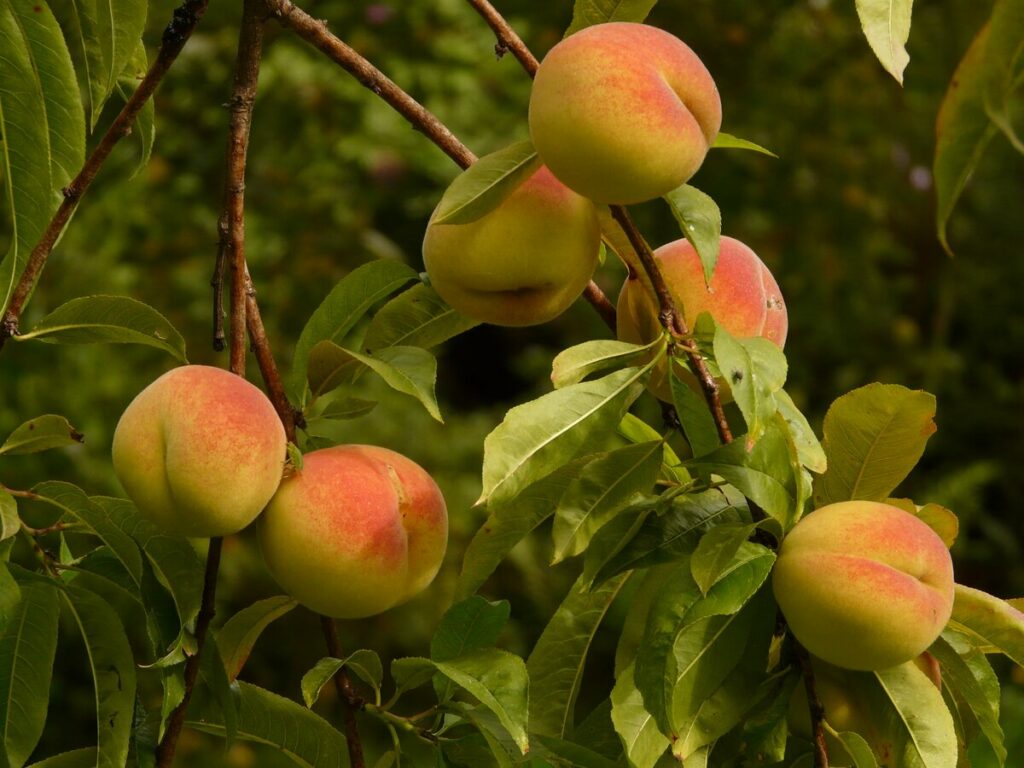
Yet another Canadian variety, the Harglow is a medium-sized apricot that is orange in color and sweet in flavor. It does well with frost and is harvested late in the season, so it does well if partnered with an early or mid-season apricot variety.
32. Hargrand
This disease-resistant apricot strain is a freestone variety that is most often eaten fresh. It has a fine texture and a distinctly apricot-like smell that makes it popular with buyers.
33. Harlayne
The Harlayne apricot’s freestone fruit has a bright orange skin with a blush flesh. It is one of several varieties that originate from Harlow in Canada, along with the Harcot, Harglow, Hargrand, and Harogem, and it is one of the most cold-resistant of apricot strains.
34. Harogem
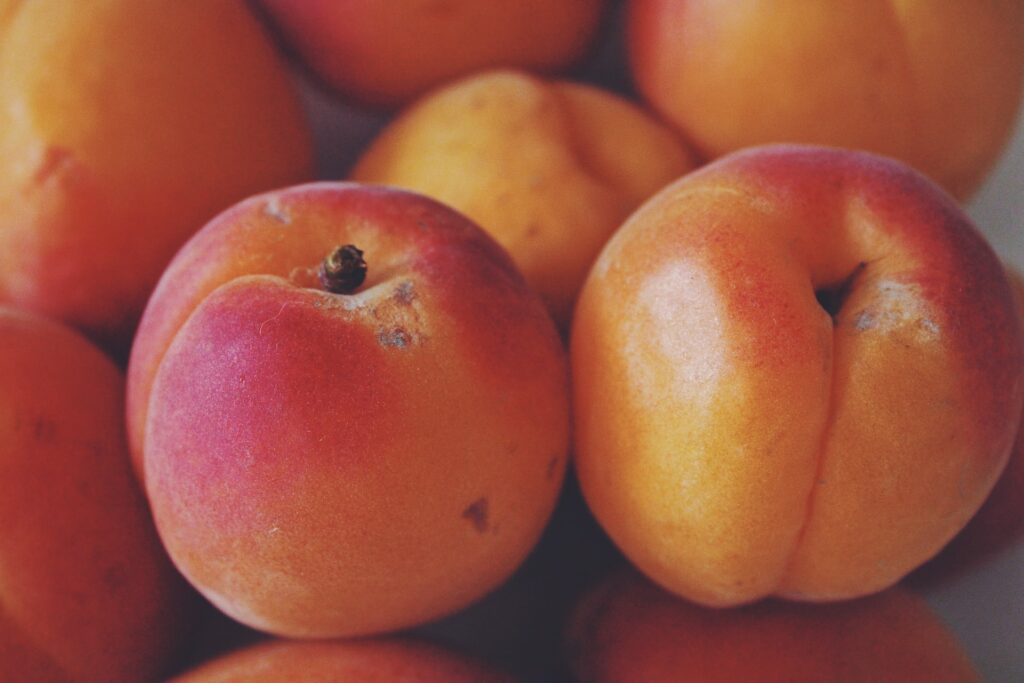
The Harogem is an orange-colored apricot that does well in colder climates and yields an orange apricot that has a freestone pit. It is most often grown with varieties of Harrow Series apricots.
35. Helena
The Helena du Roussillion apricot was first grown in France and gives a firm and sweet apricot that has a deeper orange color than most other apricots. It is commonly eaten fresh rather than used for canning.
36. Hunter
The Hunter is an Australian apricot that is popular for drying and is most often considered because it is a very late ripening fruit, so it can be grown with early and even mid-season apricot varieties to extend the harvest season.
37. Hunza
The Hunza apricot is an Indian strain that was studied for its potential health benefits and is sometimes described as being the original apricot that all others were bred from. Today, it is popular because of its stunning pink blossom.
38. Katy
The large fruit of the Katy apricot is considered to have a mild, sweet flavor. It harvests early and needs only 300 chilling hours, which means that it needs a temperate climate and won’t do well in climates that remain colder longer.
39. Manchurian
The medium-sized Manchurian apricot is grown in parts of Asia and is considered to have a very mild taste. However, it does survive colder climates, although spring frosts may cause the tree to flower too early. The most common use of this variety is to introduce hardiness when hybridizing other varieties.
40. Mokel
The Japanese apricot tree can grow to heights of 30 feet and requires full sun to grow well. The tree is popular for its ornamental value with red blooms that attract bees and other wildlife.
41. Montrose
The Montrose is another good choice for those that live in colder climates, having been first discovered in Montrose. It requires approximately 800 chilling hours to flower, and it gives large yellow fruit. Not only is the fruit itself sweet, but so, too, are the freestone pits.
42. Moongold
The Moongold is a mid-season harvesting apricot that has yellow apricots and an orange-colored flesh. The fruit is sweet, although it does have some acidity, and it is commonly used in jam making and for preserves.
43. Moorpark
The Moorpark is an Italian apricot and its seeds have been passed down, so it is an heirloom apricot. It is a mid-season variety with a yellow flesh and a freestone pit. The fruits are large, and so, too, are the trees, which means that they may not be suitable for back gardens.
44. Newcastle
The Newcastle is somewhat unusual in the apricot world because it has a bright yellow skin and may have firm or soft flesh. It is a small apricot, and the tree is considered disease-resistant, which is rare for an apricot tree. It does not do well in cold climates.
45. Orange Red
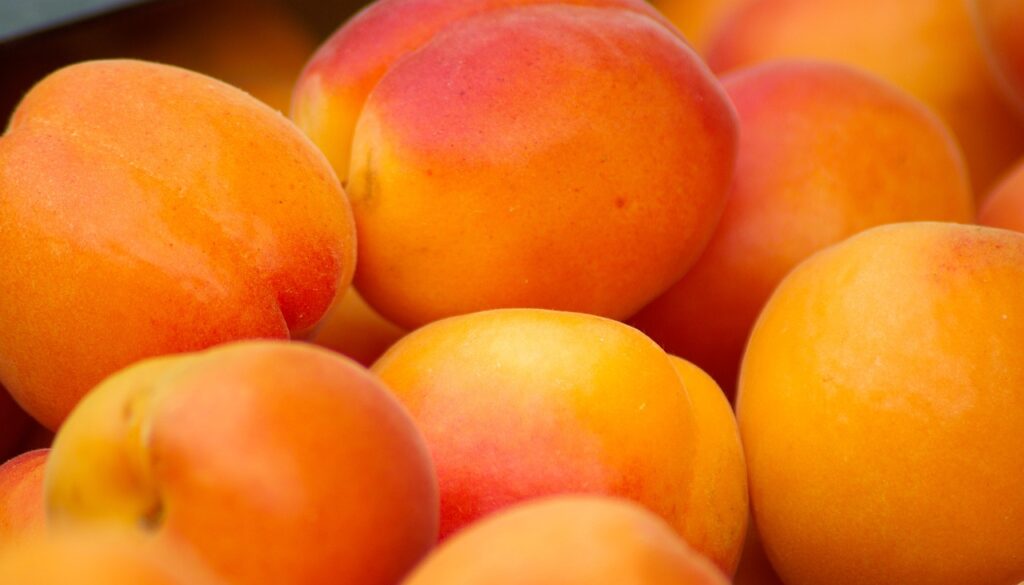
The Orange Red apricot is named for its flesh color, which is an orange-red color. Its flesh is orange, and it is a late-season apricot. The fruit remains on the tree once ripe and it stores well, which makes it a popular choice for home growers that won’t be able to use their entire harvest in a few days.
46. Patterson
The Patterson is a popular and reliable commercial grower. The fruit is a medium size, mild tasting, and is a freestone variety. The tree grows quickly and reliably, and it is self-pollinating. Home growers will find this to be an early-season apricot.
47. Perfection
This is another popular Californian commercial apricot variety. It has a mild flavor and is most often used in baking and canning rather than for eating fresh. The fruit has an orange color, and the tree can resist cold snaps, requiring 700 chilling hours to blossom.
48. Pixiecot
The Pixiecot is sometimes grown by home growers because it is a semi-dwarf, so it can be grown in more restricted spaces. It is an early-season tree, and the fruit has a plummy aftertaste.
49. Plum Parfait
The Plum Parfait apricot is a cross between a plum and an apricot. It is a freestone variety, and the tree is an early-harvesting one. The marbled flesh makes it an attractive fruit to look at.
50. Puget Gold
The Puget Gold apricot is a good choice for garden growers, as long as they have a garden that is large enough to take them. The tree is disease resistant and self-pollinating. It is a late harvesting tree, and it produces consistently smooth-tasting fruit throughout its life.
51. Riland
The Riland is a well-established variety of apricot that has a uniform, rounded shape. The fruit has a yellow skin with red flesh and is harvested mid-season.
52. Rival
The mid-season Rival apricot is not a good choice for most back garden growers because it does require cross pollination. However, it produces large fruits and has a sweet taste. It is often used for preservation.
53. Robada
Developed in California in the late 1990s, the Robada has one of the largest apricot fruits available. The fruit is freestone, and it has a sweet and acidic flavor. The tree itself will grow rapidly and extensively if given the right conditions.
54. Royal Rosa

The Royal Rosa looks like a true apricot and has the flavor to match. The tree is self-pollinating, so can be kept individually, and its fruits can be used for virtually any purpose. The tree is a mid-to-late-season harvester, and it needs 500 chilling hours.
55. Royalty
One of the most popular commercial varieties, Royalty offers a large fruit that is juicy and sweet. They also store well, which is another reason for their commercial popularity. Requiring 500 hours of chilling, the tree can grow in a good variety of different soil types.
56. Sugar Pearls
The Sugar Pearls apricot is a relatively new variety and is different from a lot of apricots thanks to its white flesh and its thick, sweet flavor. It is a late bloomer and requires 800 hours of chilling, which means that it can be grown in a good variety of U.S. climates.
57. Sun Glow
The Sun Glow is considered a hardy apricot variant with trees that can grow to 30 feet tall. It has flagrant flowers and blooms in early spring. This is a small apricot that is yellow in color.
58. Sungold
Developed in 1960, the Sungold is similar to the Moongold variety except it has a red blush to its otherwise yellow color. It is a freestone variety and is harvested a little later than the moonglow. It also requires cross pollination for ultimate fruit production.
59. Tilton
The Tilton is a forgiving apricot tree that can withstand frost so is suitable for cooler climates and environments. It can also self-pollinate, and the Tilton produces large fruits that are suitable for any purpose, from eating fresh to canning and preserving.
60. Tomcot
With 500 hours of chilling time, the Tomcot is a good choice of apricot tree in colder climates. Its fruit is orange and the large freestone apricots store and travel well, while the tree is a regular and reliable fruit producer.
61. Trevatt
The heirloom Trevatt is an old apricot variety with a mid-season harvest. It produces a lot of fruit, which are large and orange. It is a commonly grown variety that has a multitude of uses.
62. Tropic Gold
With just 350 hours of chilling required to bloom, the Tropic Gold doesn’t do well in cold climates, but it does produce orange apricots with a red blush that are sweet and full of flavor. This early-harvesting apricot will survive without much water and is self-pollinating, so it can be a good choice for home growers.
63. Veecot
The mid-season Veecot has a dark orange color and no fuzz or hair on its skin. The fruit is sweet and can be eaten fresh or used for preserving and canning. This is a self-pollinating tree, although cross-pollination will yield more fruit per season.
64. Velvaglo
The Velvaglo originates in Ontario and best enjoys climates similar to those in South Ontario. It produces tasty, aromatic fruits that are said to be popular at farmers’ markets because of their appealing look and smell.
65. Vesuvius
Another heirloom variety, the Vesuvius apricot comes from Italy and tends to be considered a specialty variety because of the heirloom seeds and because the apricots are delicate. They need to be picked manually and rarely survive shipping.
66. Vivagold
The Vivagold is a mid-season apricot that has a light color and a smooth texture. It has hard flesh, which means that it can survive some travel without being ruined or becoming too badly damaged. The fruit does need careful picking, however.
67. White Knockout
The early-season White Knockout apricot requires 500 chilling hours and produces a fruit that is sweet and strong. Like other white apricots, it has a light flesh, but the color of the skin can vary from a more typical light yellow to an atypical light green.
Conclusion
Apricots are eaten throughout the world. As well as being eaten fresh in regions where they can be grown, they are used in baking and are also preserved, canned, or dried so that they can be shipped to other regions around the globe. Above are 67 varieties of this incredible fruit, but others exist and many more are still being developed.
Featured Image Credit: Pezibear, Pixabay
Contents

